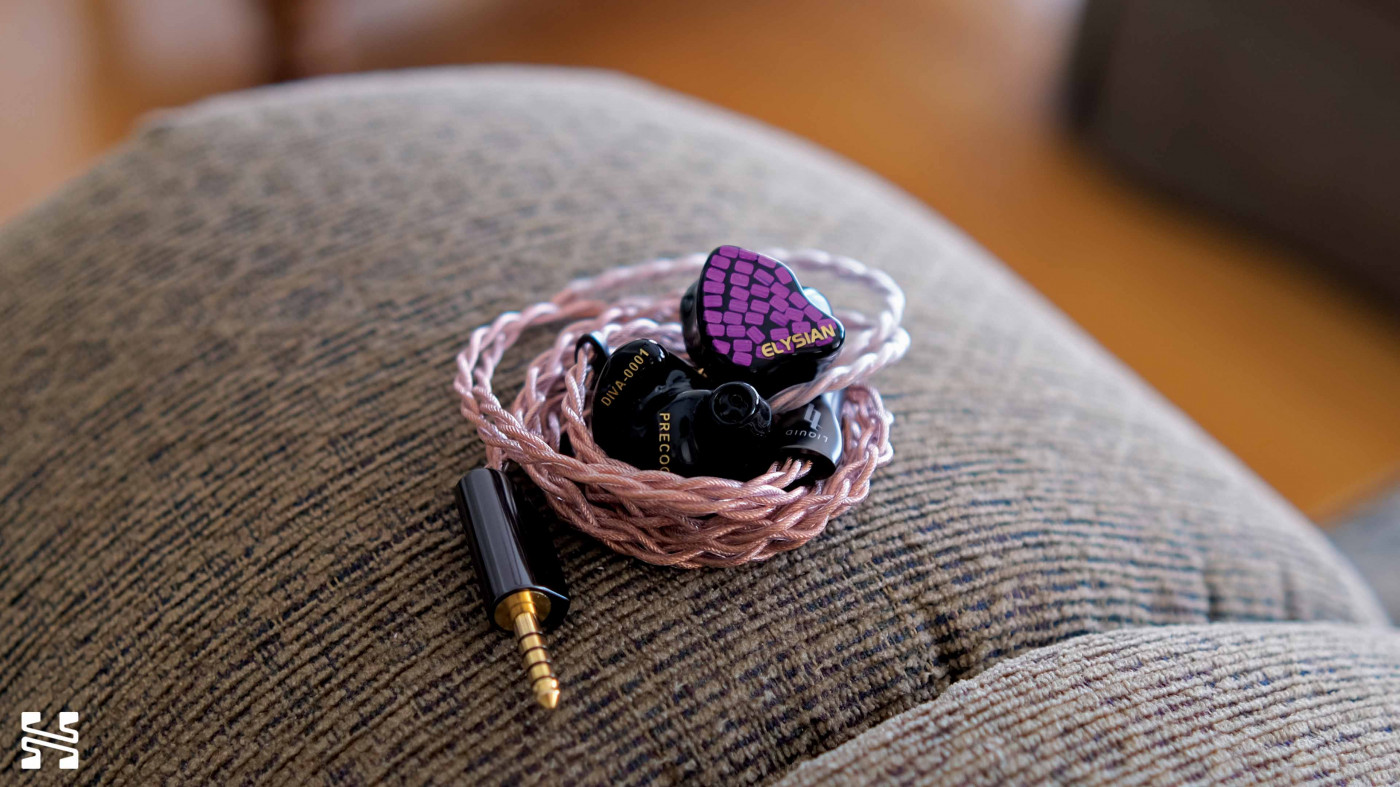Elysian Acoustic Labs Diva Review - Precog's Take
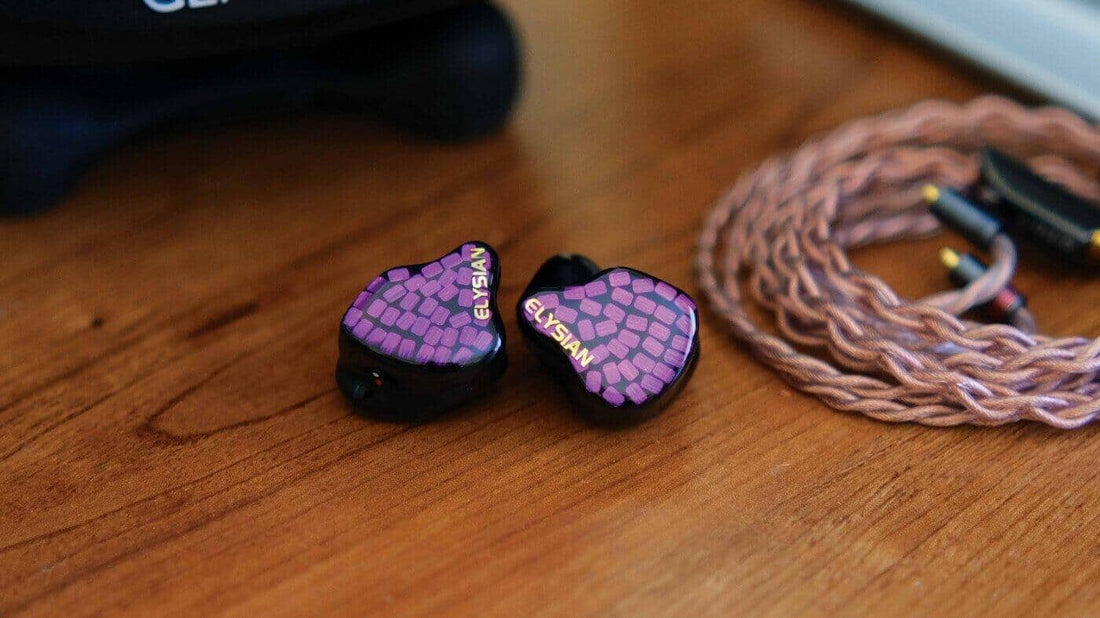
Elysian Acoustic Labs Diva Review
Written by PrecogVision
Introduction
For the uninitiated, Elysian Acoustic Labs is a one-man-show based out of Malaysia. Some readers might recall my review of the brand's Annihilator 2021 in which I stated it was a world-class IEM despite the eye-watering $3500 USD price tag. Recognizing the less-than-accessible price tag of the Annihilator 2021, Lee, the man behind Elysian Acoustic Labs, has since released the Diva. The Diva is a 6BA configuration that rests at a more palatable (but still expensive) $1500 USD for the universal version. Like the other Elysian IEMs, it can be purchased through Zeppelin and Co in SG, Stars Picker in Malaysia, or messaging Lee directly on Facebook or WhatsApp.
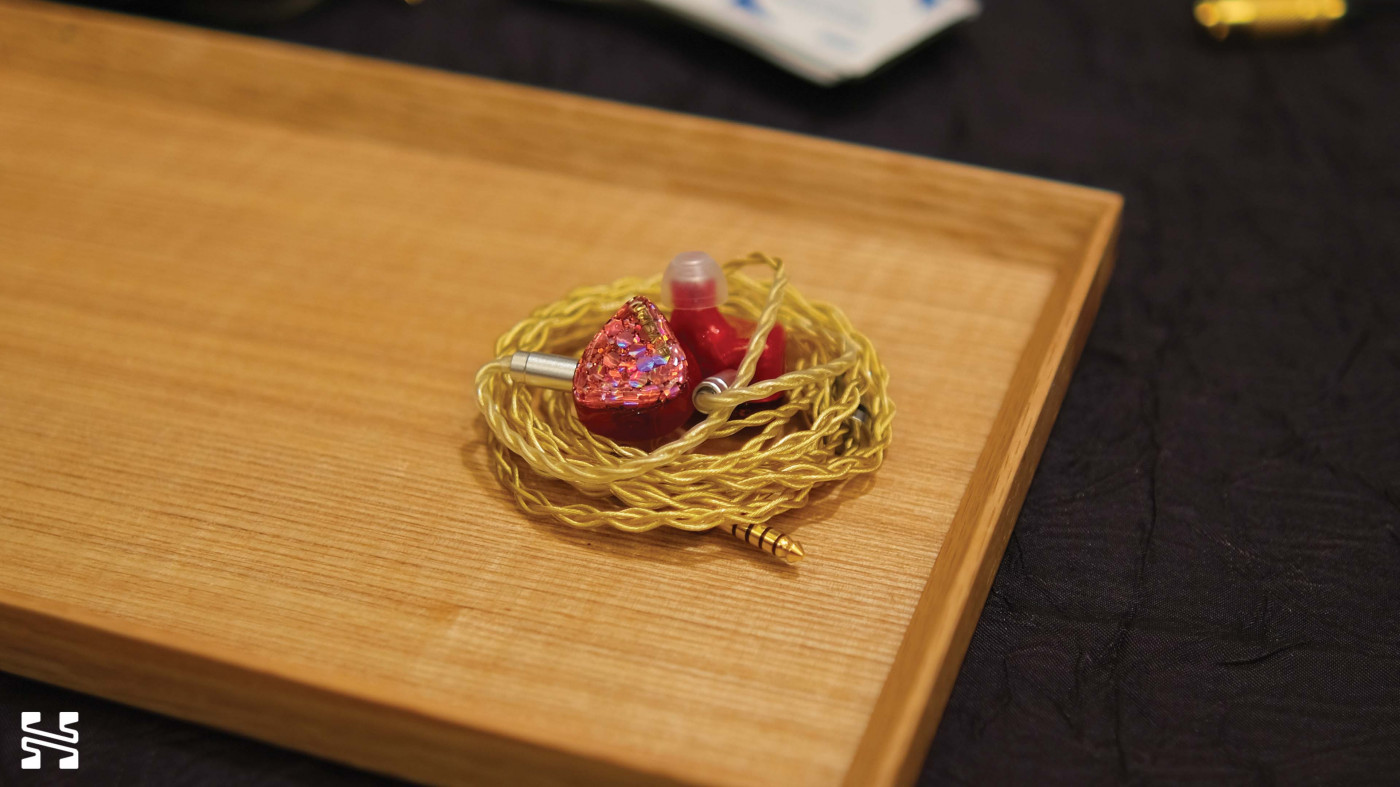
Now, I should note that I actually heard the Diva at CanJam Singapore way back in April 2022. After hearing the demo unit (which is shown above), I immediately plonked money down on my own because - yes - it just sounded that good. I also had fresh ear impressions taken at Zeppelin and Co, Singapore's audio cafe, so I thought why not go for the CIEM version? What transpired next was something no one wants to hear: numerous production delays, supply chain issues, and not-so-accurate timelines. But again, it sounded that good. So I patiently waited (and might've spammed Lee every few weeks asking where my Diva was) before it finally showed up about five months later. That is a long time, and now I'm inevitably forced to question whether the Diva sounds as good as I remember and whether the wait was worth it.
This unit was purchased for review with my own money. As always, what follows are my honest thoughts and opinions to the best of my ability.
Elysian Diva - Product Summary
- Reasons to buy
- Integrated bass dial for tuning flexibility
- Excellent sense of resolution and dynamics
- High-quality accessories
- Reasons not to buy
- Very long build/wait time
- Soundstage is decent, but not great
Source & Drivability
All critical listening was done off of an iBasso DX300 and iPhone 13 Mini with a Questyle M15. My Diva is a CIEM, so no ear tips are required. The stock cable was used. The Diva takes a sizeable amount of power to drive, but I had no issue getting it to my usual listening volumes (~70dB) with any of my sources. If you'd like to learn more about my listening methodology and beliefs in audio, then I would encourage you to check out this page.
What's in the box?
The Diva arrives in packaging that is reminiscent of the Sony IER-Z1R's legendary unboxing experience. Pulling back the magnetic latch, you'll find the IEMs nested alongside a case. Two individual trays underneath contain a Liquid Links Conti cable, cleaning tool, flathead screwdriver, microfiber cloth, and a card of authenticity.
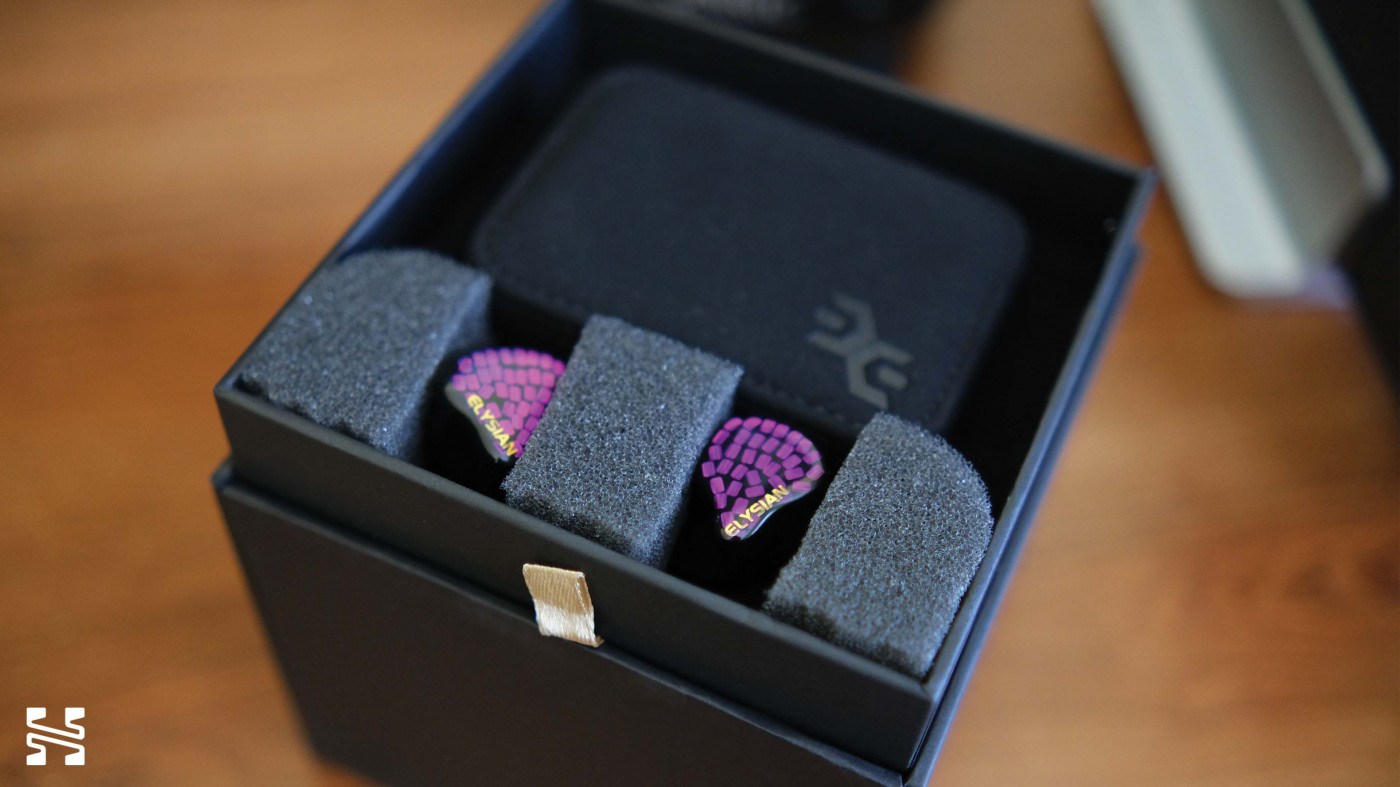
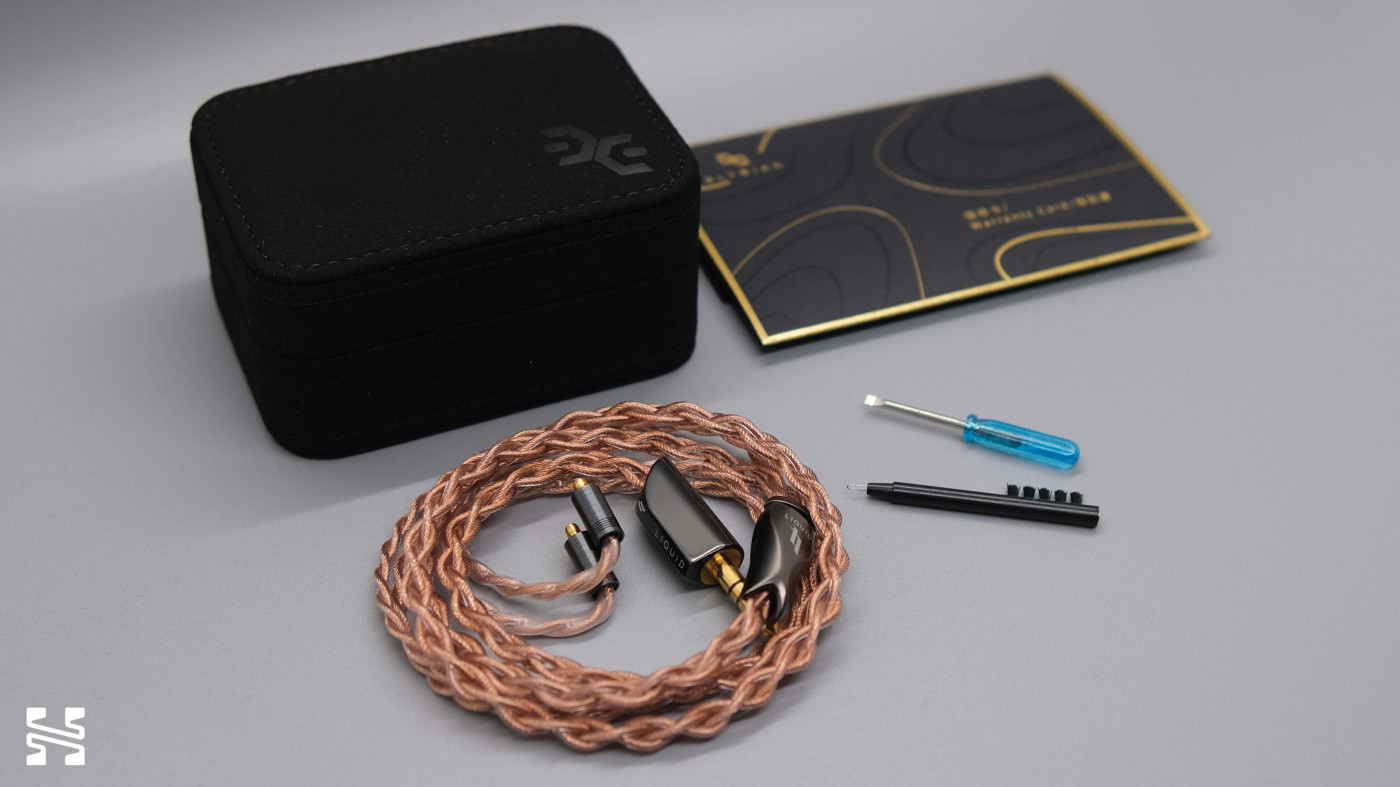
There is no mistake that these accessories are of high-quality. The case has a hard lining beneath a suede fabric that has been emblazoned with the Elysian logo. Opening the case via the magnetic latch reveals a mesh slot at the top for storing the cleaning tool and flathead screwdriver. It's a simple yet elegant case. My only real complaint is that the suede fabric is prone to picking up lint.
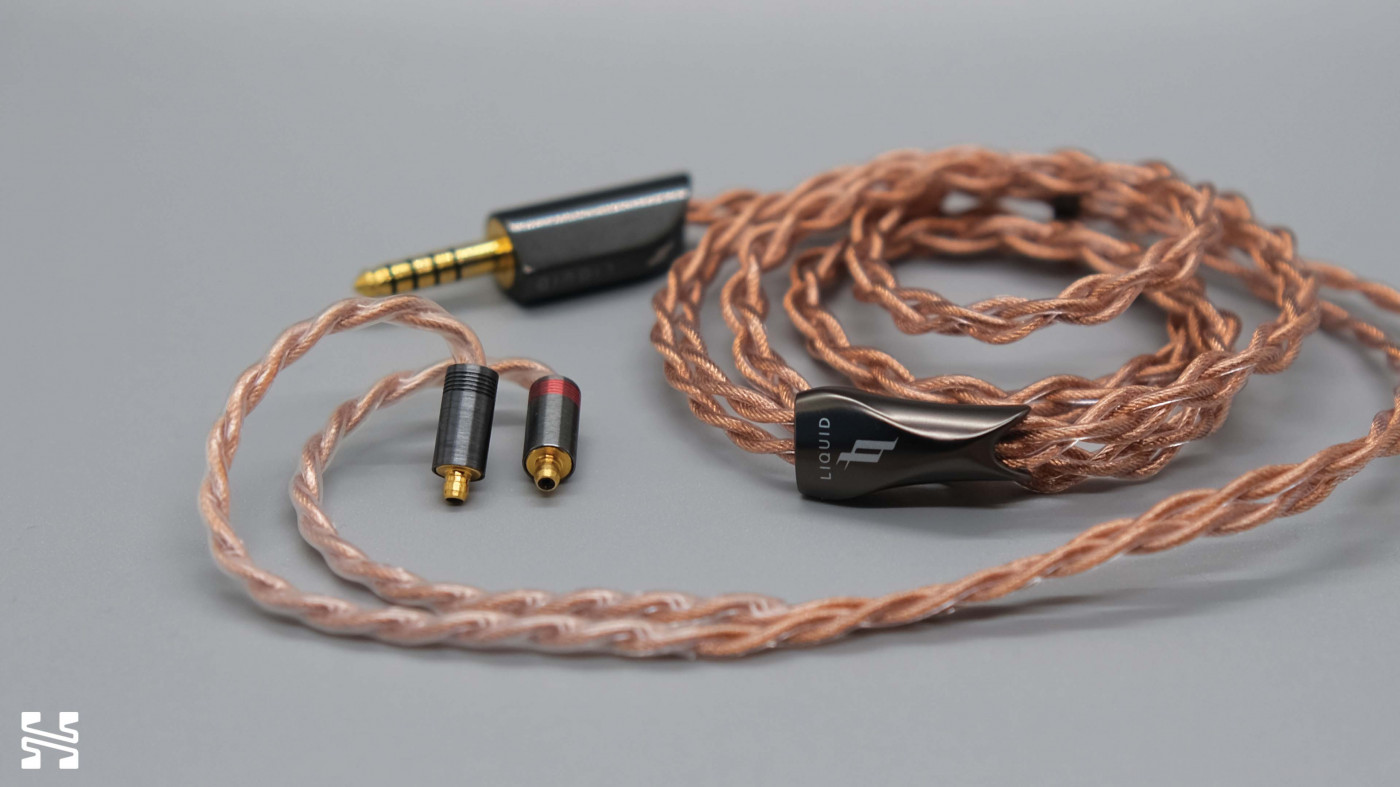
The Liquid Links Conti cable is one of the highest-quality cables that I've played with (and make no mistake: I've had the opportunity to hold many expensive cables, most of which were fairly disappointing in my book). The jack and splitter have a sleek, smooth finish with no signs of surface blemishes. They feel rock solid when I tap my finger on them. The logo is placed perfectly on the splitter with no signs of fading or misalignment. There is no glue peeking from the 4.4mm jack. If I had one complaint about this cable, it's that it's a bit heavy...but this is still a damn good cable. I actually prefer it to the Liquid Links Martini which was also sent to me.
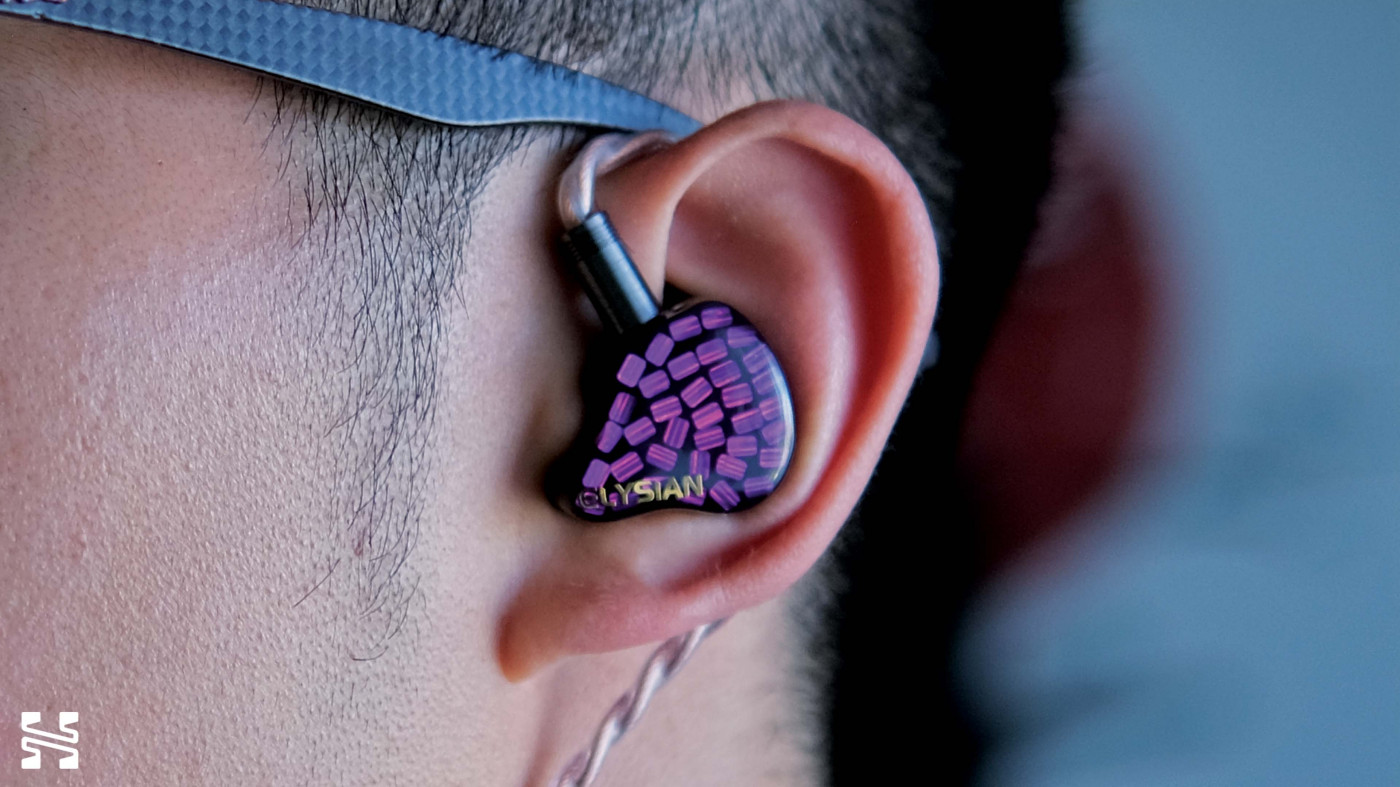
The universal version of the Diva is quite large, which is part of what motivated me to purchase a custom version. But even in CIEM form, compared to my 64A A3t and A4s, the outside of the Diva's shells protrude slightly more from my ear. The nozzles are also stouter than my other CIEMs which meant that it took me some time to get accustomed to the fit. The seal can still break slightly when I am lying down flat on my back, a common issue with CIEMs that is exacerbated by the Diva's stouter nozzle. Generally, I find the build quality to be good. The resin for the shell feels thick. The logos and engraving are flawless which, especially for the engraving, is impressive because it's done by hand. I'm less impressed with the purple flakes in terms of their placement - I think they could have been applied more consistently. But this is done by hand too.
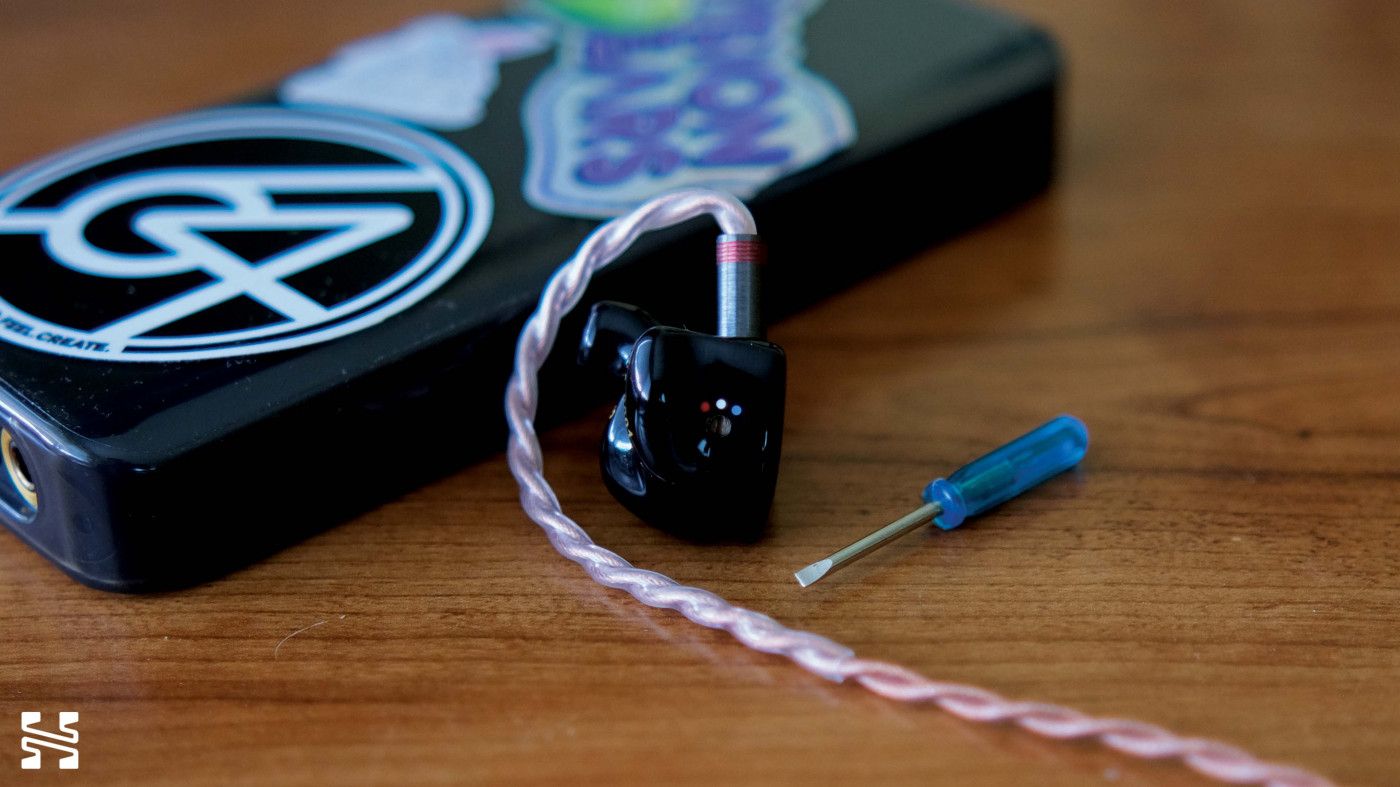
At the back of the Diva, there is a circular hole with a selector dial that is adjusted via the small flathead screwdriver. This is to set the level of bass output (something I'll explore more closely in my sound analysis). I didn't find this hole to make any difference to comfort.
Sound Analysis
The measurements below were taken using an IEC-711 coupler and putty to achieve a seal. Because this is a CIEM, these measurements should neither be considered entirely representative nor be used for comparison with UIEMs.
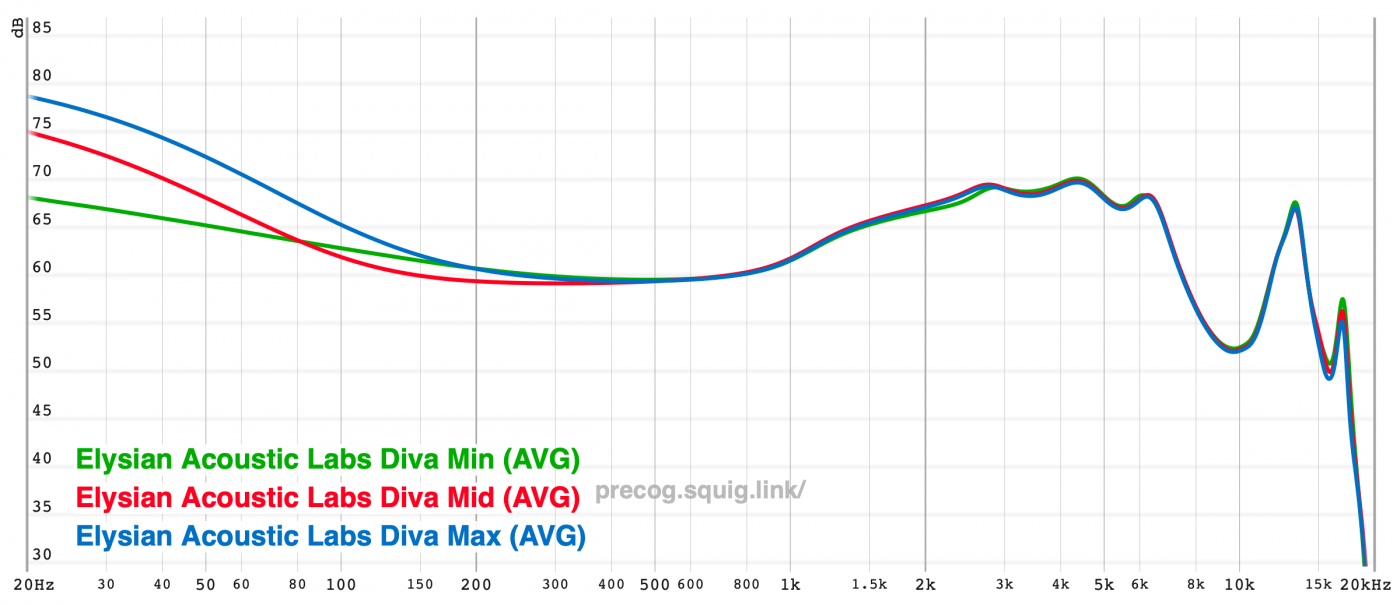
The Diva has three distinct signatures because of its integrated bass dial. It's fair to point out that are other IEMs that use similar gimmicks to control bass; the distinction being that the Diva's bass boost is kept incredibly clean on all three settings due to an aggressive lowpass. The middle and max settings beget an energetic and fun presentation; congruent with its name, the Diva seems to shine most with female pop music - especially K-Pop in my experience - and EDM on these settings. By contrast, the minimum setting is fairly close to neutral for an all-rounder presentation while maintaining an exciting, slightly artificial edge. My comments below will apply to the middle setting unless otherwise noted.
Bass
Now, in terms of actual bass performance, the Diva has a few more tricks up its sleeve relative to common stigmas that might be applied to the BA topology. Provided a good seal, the Diva's bass pounds, rumbles, and bounces despite ultimately falling short in texture and slam. By slam, I refer to a sense of snappiness and explosion behind notes. I find that the perception of slam is often aided by incisive attack transients. Closer listening, then, reveals a slight softness to the Diva's bass transients; a subtle attack blurriness that is characteristic of the Sonion BA woofers. This is in spite of just how clean a bass shelf the Diva has. The Diva's bass is really more impactful in the sense that it feels like air is being pushed in a more pillowy manner. But while I'd consider the Diva's bass not quite up to par with the best dynamic drivers, it puts on a pretty convincing show for a BA configuration - particularly on the middle and max settings - and I wouldn't hesitate to take it over most dynamic drivers I've heard.
Due to how controlled the Diva's bass boost is on the middle setting, I've noticed that some songs with more mid-bass will not deliver as impactful a bass response. This can be addressed with the maximum setting. But songs that go under 30-40Hz in the bass, like the one above, are a treat on the ears with the Diva's middle setting.
Midrange
Working upwards, the Diva has the hallmarks of Elysian's house-sound with an aggressive rise to the upper-midrange that teeters on being excessive, specifically at 4kHz. However, the Diva's smooth slope into the lower-treble acts to balance out the extra emphasis at 4kHz. On Seori's "Lovers in the Night", where her voice has a dark yet fragile timbre, she sounds just a little crisper than I'm used to on my other IEMs. Other tracks with more emphasized upper-midranges generally sound a tad unnatural, but in a desirable, engaging manner. String plucks sound incredibly crisp and delineated. Electric guitars on SNSD's "Flyers" pop vibrantly, despite being pushed back further in the mix, really allowing the track to soar.
For context, this is all with the middle bass setting which has a dead-flat lower-midrange. Some tracks like Brett Young's "Catch" benefit from shifting to the minimum bass setting for more lower-midrange body. Using either the minimum or maximum bass settings will also alleviate some of the forwardness to the upper-midrange if it's too much. It's important to note that what you hear, and frequency response, is all about the big picture. Even subtle shifts in one frequency might significantly affect what you hear in other frequencies.
Treble
Speaking of frequency response, the Diva's measurements above are deceptive: I observed significant variation in treble response with the slightest of placement adjustments on the coupler. As for what I actually hear, I would say the Diva's treble response is distantly reminiscent of the 64A U12t's with a lower and upper-treble focus. However, the mid-treble valley that I hear on the U12t is more narrow on the Diva, and the Diva comes up for air at a slightly lower frequency than 16kHz and with less magnitude. I'm not sure which response I think is more desirable. On one hand, the Diva's treble would likely be less pesky for younger listeners; on the other hand, it doesn't have the exaggerated sense of space the U12t exhibits up top and it still sounds about equally artificial. But this is nitpicking. The head of cymbals connect smoothly, and snares sport excellent distinction between rapid hits. Shakers and background shimmer pop vividly; the Diva's sheer extension is excellent. The bottom line is that this is a commendable treble response that accentuates the aggressive upper-midrange.
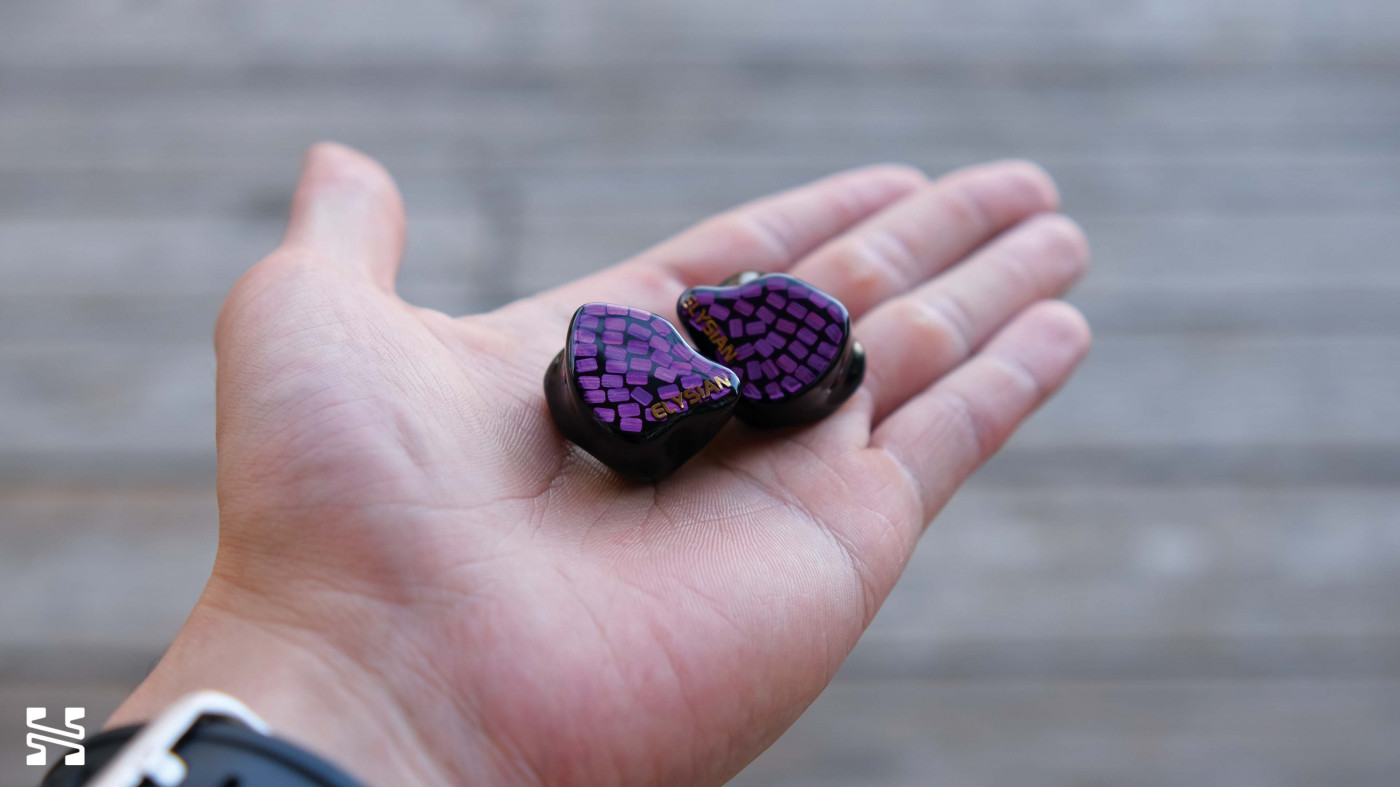
Technical Performance
The Diva is as much a technical performer as it is fun. Macro-detail is stunning with a strong sense of capturing the "big picture" in music; transients are crisp in attack, and decay quickly, especially in the midrange and treble. The Diva's sense of micro-detail takes a step back; I would suggest that this observation is mostly psychoacoustic. How so? The Diva forces detail on listeners to the point of which it can almost sound unnatural. And here, I'd mostly point to the flat lower-midrange and slight emphasis at 4kHz. The brief but sharp mid-treble recession in the treble also affects timbre by giving it a "glossy", digital characteristic. Taken all together, if I had to make an analogy, the Diva's presentation is akin to a image that has been sharpened but without unwanted grain or coarseness.
Speaking of images, the Diva's imaging is quite precise even if it does not have the largest soundstage. Center imaging is distinct without popping out of the head stage, as is characteristic of IEMs with aggressive pinna gains centered at 3kHz. Dynamics on the Diva are excellent; it is the most dynamic IEM that I have heard, from memory, for $1500. It's difficult to express exactly what this means in words: music simply moves me, and I find myself itching to crank up the volume despite the aggressive upper-midrange. It's not all unfettered praise of the Diva's "intangibles" from this reviewer, though: the Diva's sense of coherency is slightly off between the bass and other frequencies. Relatively speaking, IEMs like the DUNU SA6 and 64A U12t that also use vented Sonion BA woofers have the advantage of thicker midranges. The thicker midranges mask some of the transition from the bass frequencies upwards via matching, slightly blunted attack transients. To be clear, this is all my subjective experience, as IEMs are minimum phase devices.
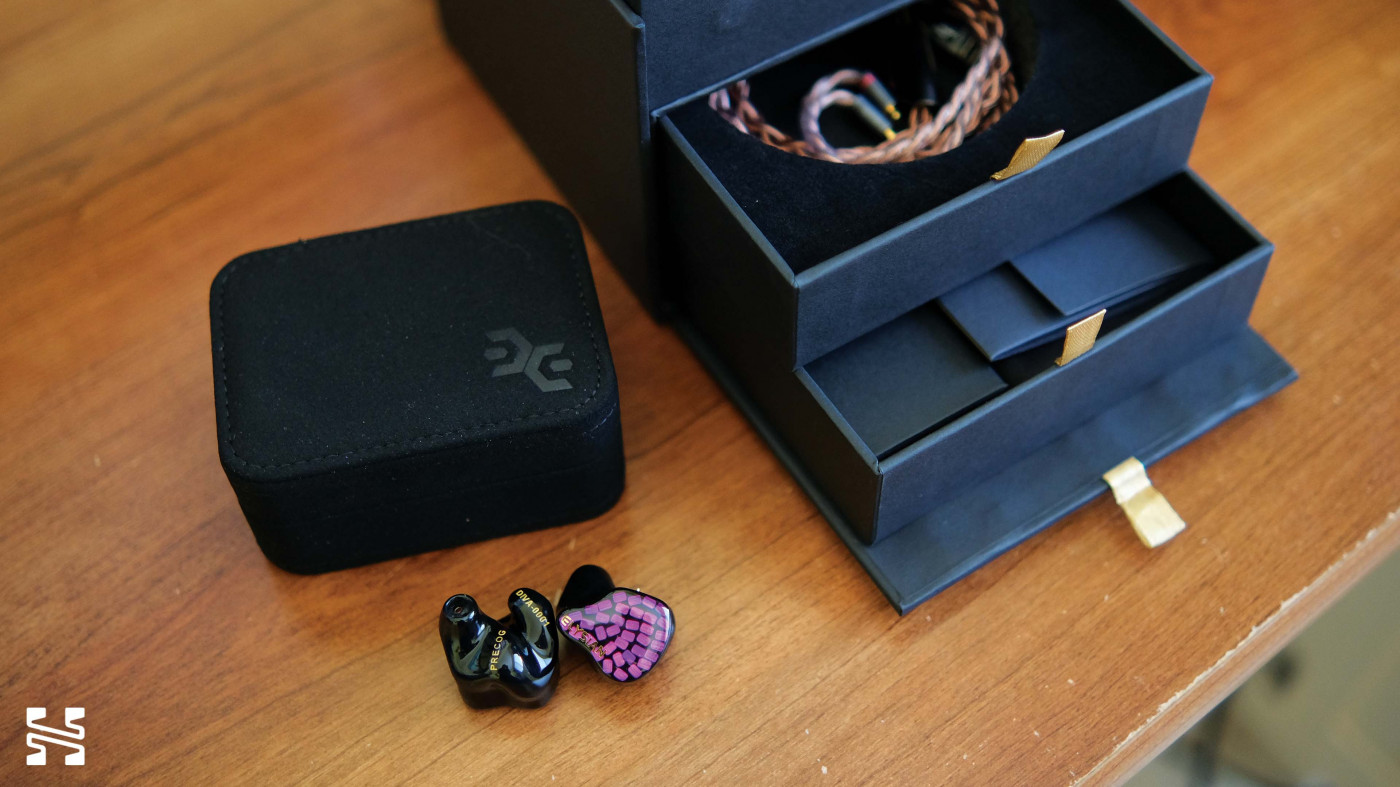
Love our in-depth reviews?
We test and review hundreds of headphones every year. Sign up to get the latest news, reviews, guides, and more in your inbox. Join the 60,000+ like-minded audio lovers who love our newsletter!
Comparisons
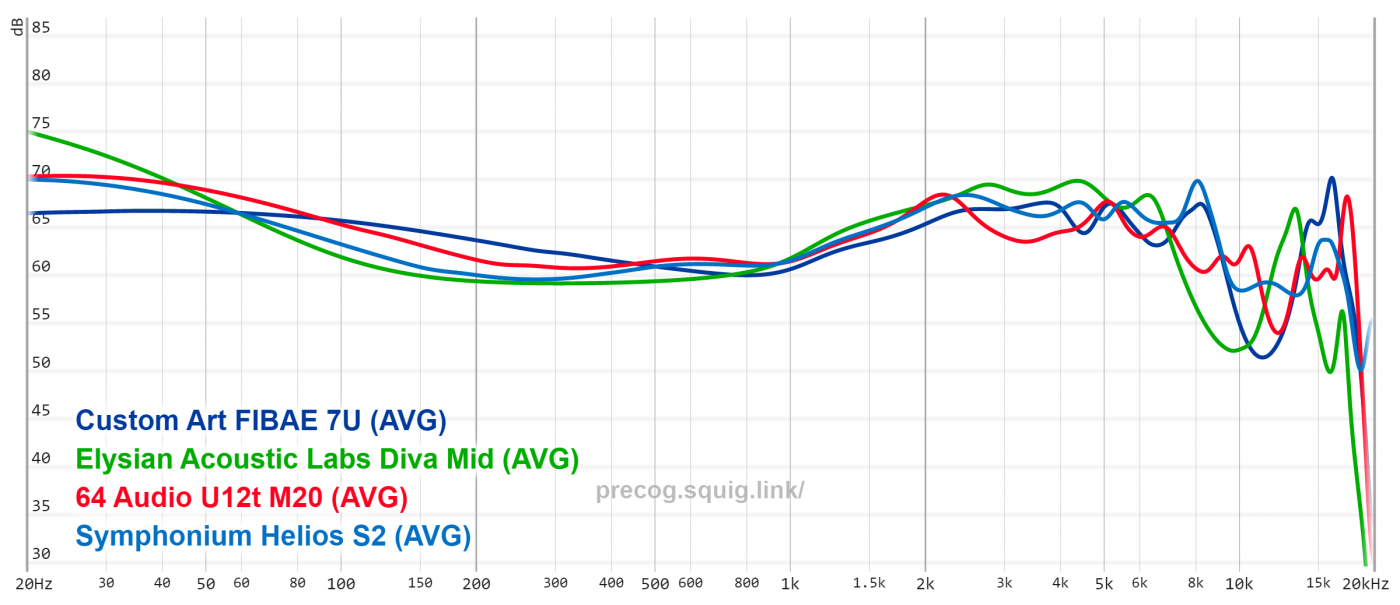
Symphonium Audio Helios ($1100): This is possibly one of the few IEMs in kilobuck territory that merits some comparison against the Diva. Generally, the Helios has a drier timbre and a presentation that is more reminiscent of studio monitors. This can partially be attributed to its close-to-linear treble response, a characteristic that most all IEMs on the market lack. Its bass is more BA-ish with the snappy attack that I generally associate with the driver topology, plus some added slam. At the same time, this dry presentation can be the Achille's heel of the Helios. It's superbly technical, possibly matching the Diva for its sense of detail and imaging, but the Diva simply sounds more engaging and exciting by comparison. To me, these two IEMs basically represent what the best has to offer at their respective price brackets.
Custom Art FIBAE 7U ($1500): I'm slotting this IEM in because I have it for A/B comparison. The Fibae 7U has a much more conventional BA presentation (from the nature of its bass response to its more "weightless" transients), and it puts a stronger emphasis on the 10kHz frequencies upwards. Like the Diva, then, the 7U does not have a particularly natural presentation - the distinction being that the 7U swings even further into left field. Where the 7U pulls ahead of the Diva is in imaging; it has a larger soundstage and greater sense of space between instruments due to its strong upper-treble boost at 15kHz. This is its main selling point compared to the Diva. The Diva would be the better all-rounder just by virtue of its tuning flexibility and having a general edge in dynamics and resolution.
64 Audio U12t ($2000): These two have a lot of similarities in their bass transients from the slight blunting to attack and the more "impactful" sense of air being pushed. Similarities begin diverging at the midrange. The Diva has a strong emphasis on clarity and female vocals sound much more upfront. In terms of technicalities, I think the distinction that stands out most to me is that the U12t sounds effortless. Detail pops out at you without coming across forced like on the Diva, and there is a sense that everything is in sync sans the treble which is handled by 64A's proprietary tia driver. But even that meshes somewhat thanks to the lingering shimmer the 15kHz peak creates to my ears. The imaging on the U12t is also just...better. The center image of the U12t pops outwards like two channel speakers, if only slightly, and there's a terrific sense of space between instruments. At the end of the day, the Diva is more exciting and aggressive, while the U12t is more refined and the critical listener's pick. But it should be telling that I am comparing the Diva to an IEM that is not only more expensive but that is also basically the perennial, flagship IEM benchmark.
Elysian Annihilator 2021 ($3500): Note that this comparison is based on memory. The Diva has a stronger sub-bass focus than the Annihilator while the Annihilator has more slam, skewing toward the faster side for a dynamic driver. The midrange of the Annihilator is also more dry, especially in the lower-midrange. The Annihilator's upper-midrange is more forward, specifically in the upper-harmonics, as a result of differences in their treble response. To this end, the Annihilator's treble response is thinner, has more mid and upper-treble, and generally sounds incredibly precise and quick. Almost without question, the Annihilator is just slightly more technical all-round (it's probably the most technical IEM I have heard, minus possibly the prototype Subtonic Storm). That said, I feel like the Diva presents a compelling alternative - not just by virtue of its cheaper price but also on the merit of its sound. The Diva is more flexible in terms of tuning, especially for extended listening, and it's not a one (or two) trick pony like the Annihilator might be considered.
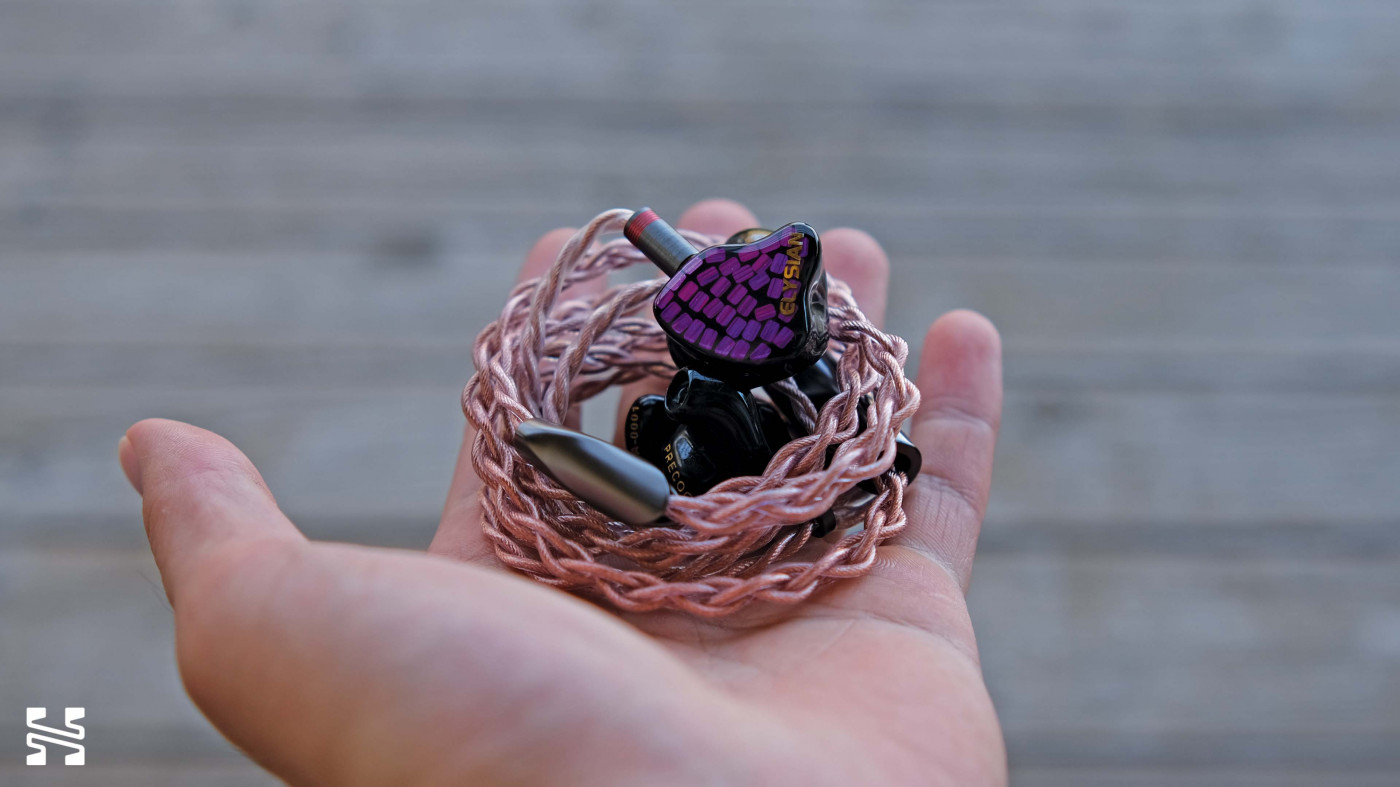
The Bottom Line
There's no question in my mind that the Elysian Diva is one of the few flagship IEMs that is worth its salt. It's a chameleon in terms of tuning that mostly screams fun but that can also play a more reserved role when needed. In fact, I have found myself actually adjusting the bass pot occasionally; usually with IEMs that have these types of gimmicks, I'll just choose one setting and leave it. In essence, the Diva has the whole package: tuning variety, class-leading technicalities, excellent build quality and accessories, and my firm seal of approval. I think the real question is whether you're willing to play the waiting game for this stellar IEM.
--
Join our community forums here!
--
